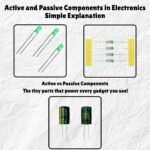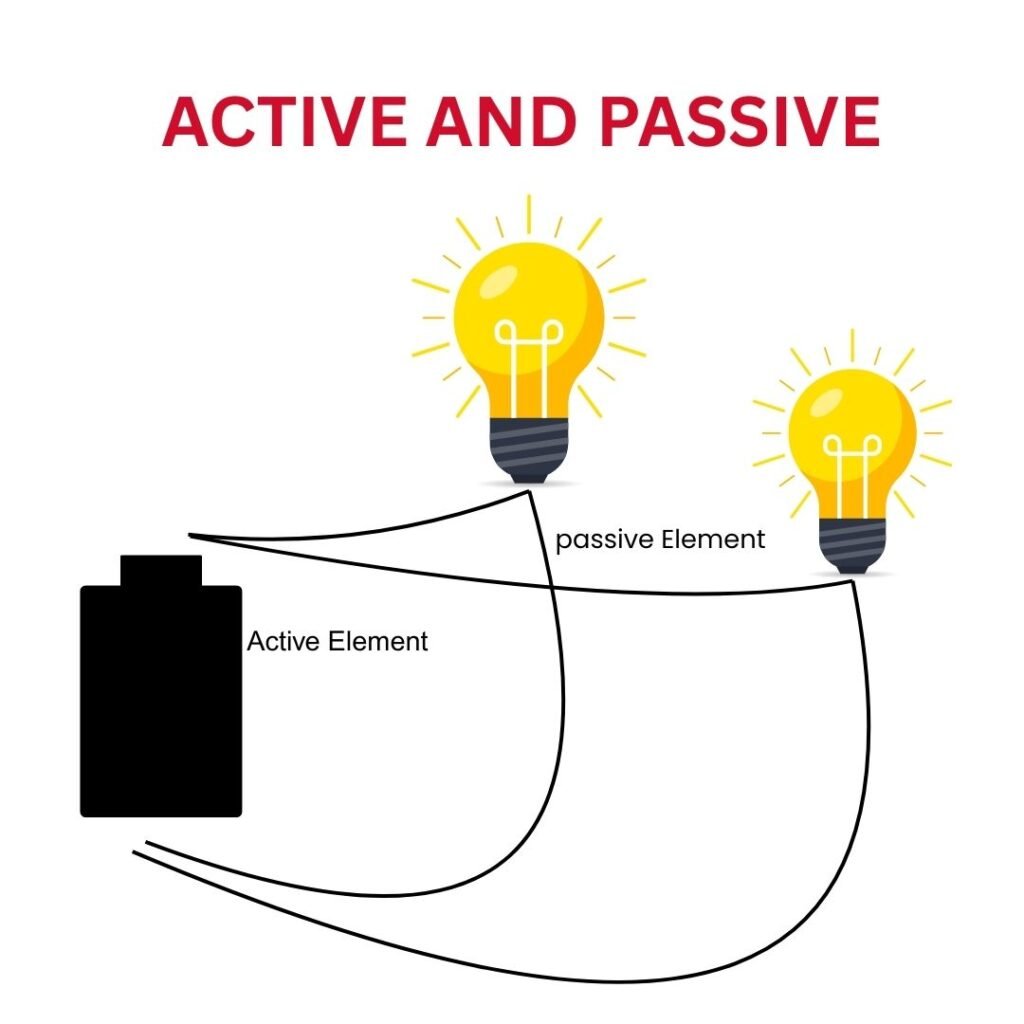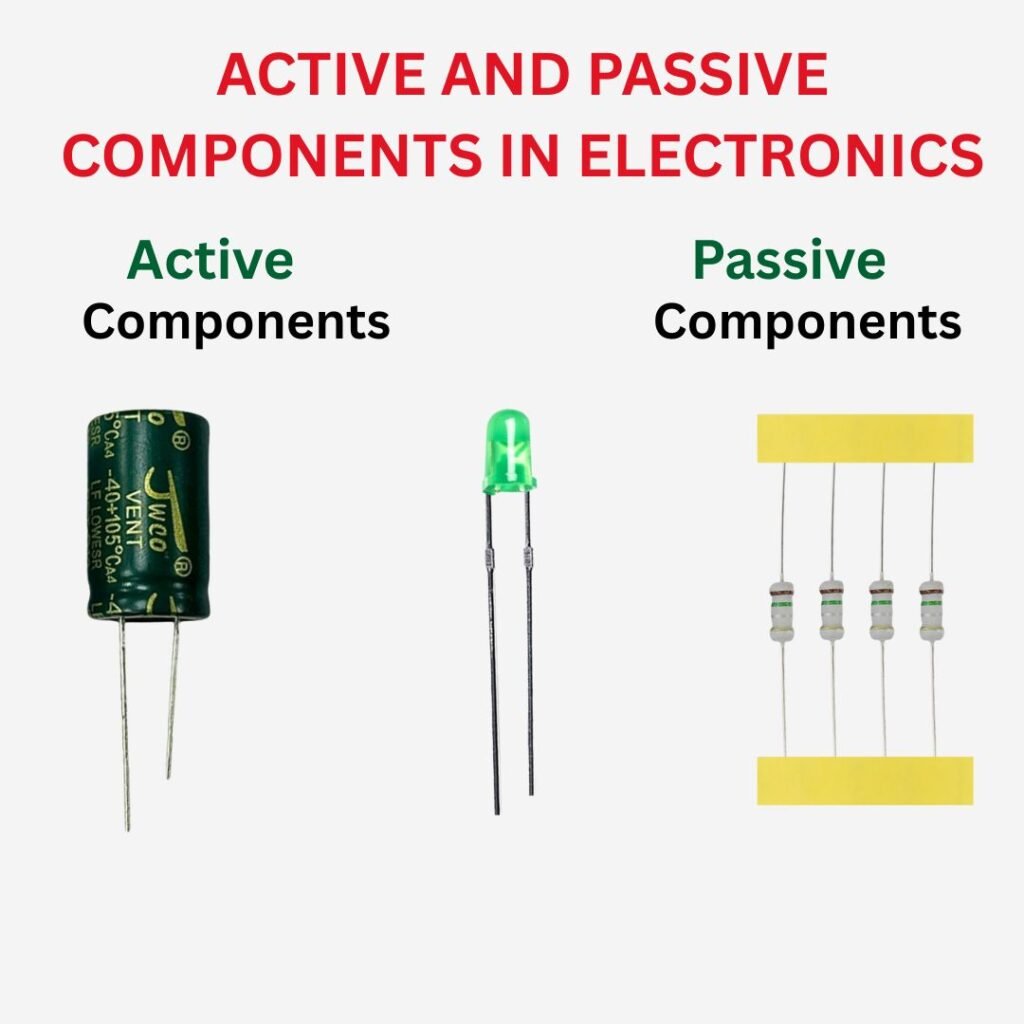Active and Passive Components in Electronics Simple Explanation

Learn the Difference Between Active and Passive Components Easily
Introduction
Look around your home and you will see many devices like fans, TVs, washing machines, phones, and lights. Each of these has a small electronic circuit inside that helps it work. A circuit is just a closed path for electricity to move.
To build this path we use tiny parts called electronic components. Every device from a torch to a smartphone uses many of these parts. Some give energy; some only store or control it. All parts can be placed in two main groups: active and passive. If you understand this simple difference, electronics becomes much easier to learn.

Active Components – The Energy Givers
An active component is a part that can give energy or boost a signal in a circuit. It does not just let the current pass; it can make the signal stronger, switch it on or off, or control how it flows. Active components need an outside power source like a battery or power adapter. That extra power lets them do work inside the circuit.
Think of a battery inside a toy. It pushes energy so the toy moves. A transistor in a radio can take a very small sound signal and make it big enough to be heard through a speaker. Even a tiny LED light is active because it changes electrical energy into light. Integrated circuits (ICs), which are small chips with thousands of parts inside, are active too—they control phones, computers, and many smart devices. Active parts are like the heart of a machine: they send energy out and keep the circuit alive. Without them, nothing would move or work.
Passive Components – The Energy Handlers
A passive component is a part that does not create energy. It only stores, slows down, or releases the energy already inside the circuit. Passive parts make sure the circuit stays safe and steady.
A resistor is a good example. It reduces the amount of current so other parts do not get damaged. A capacitor stores a small charge and releases it when needed, helping smooth out sudden changes in power. An inductor keeps energy in a magnetic field and is helpful in filters and power supplies. A transformer moves energy from one coil to another and can change voltage levels, but it never creates extra power.
Passive parts are like storage tanks or valves in a water system. They control and balance the flow but never push it. They cannot make a weak signal stronger, yet without them, circuits would be noisy, unstable, or even break.
Active vs Passive: Quick Comparison
| Feature | Active Components | Passive Components |
|---|---|---|
| Power Source | Needs outside power | Works without extra power |
| Main Role | Give or boost energy | Store, control, or absorb |
| Signal Amplification | Yes, can make it stronger | No, only handles energy |
| Examples | Battery, transistor, IC, LED | Resistor, capacitor, inductor |
| Energy Nature | Energy giver | Energy receiver / holder |

Why Circuits Need Both
Imagine a simple torch. The battery is active because it supplies energy. The LED bulb is active because it changes energy into light. A small resistor is added to limit the current so the LED does not burn out. That resistor is passive. Without the battery, no power flows; without the resistor, the LED may fail. Both kinds of parts work together to keep the torch safe and bright.
In a smartphone, the processor chip and battery are active—they do the heavy work and feed power. All around them are tiny resistors, capacitors, and coils quietly making sure signals stay clean and power does not jump up and down. Remove those small passive parts and the phone will crash or heat up.
Conclusion
Active and passive components are like the team players of every electronic circuit. Active parts give energy, boost signals, and keep the circuit alive, while passive parts guide, store, and protect that energy. One cannot work well without the other. By knowing this basic difference, you can understand how devices around you—from a tiny torch to a smartphone—stay powered and safe. Learning these building blocks is the first step toward exploring the exciting world of electronics.
FAQ
1. What is the main difference between active and passive components?
Active components can supply energy or amplify a signal, while passive components only store, control, or resist the flow of energy already in the circuit.
2. Do passive components ever need an external power source?
No. Passive components work without any extra power. They simply manage the energy coming from other parts of the circuit.
3. Is an LED active or passive?
An LED is an active component because it converts electrical energy into light and needs power to work.
4. Why are passive components important if they don’t create energy?
They protect circuits, smooth power flow, and prevent damage by controlling how electricity moves, which keeps the system stable and safe.
5. Can a circuit work with only active or only passive components?
No. Most circuits need both. Active parts provide and control power, while passive parts manage and balance it. Together they make the device work properly.



